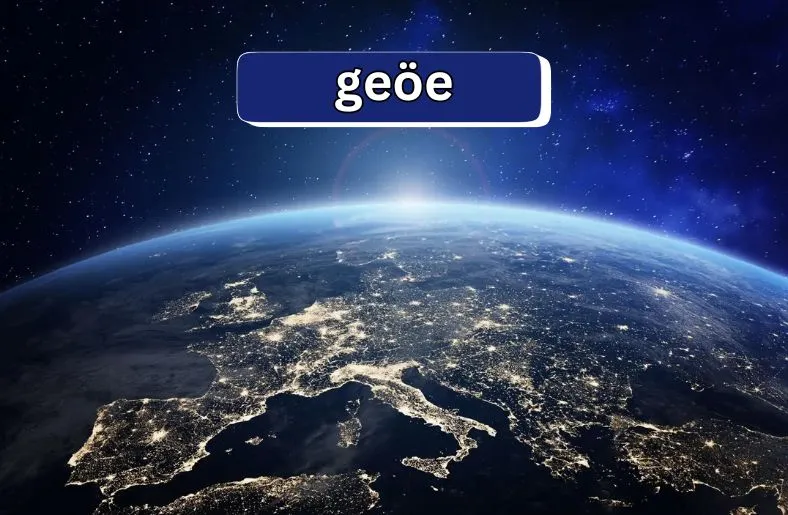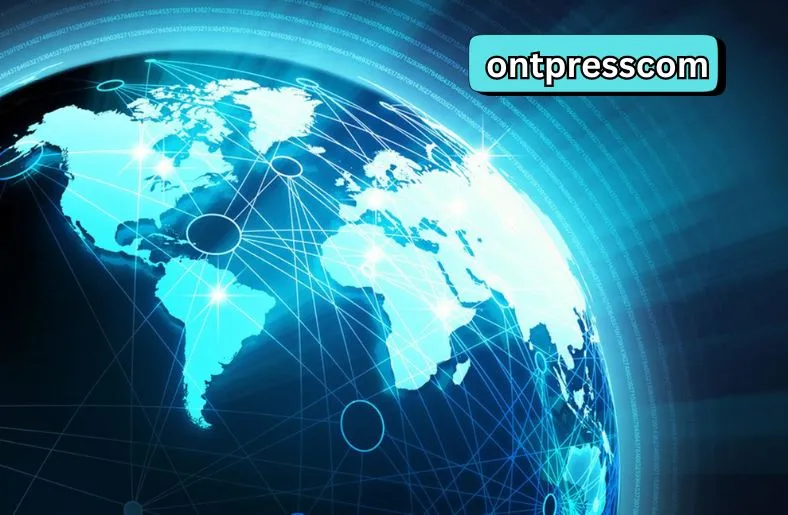Introduction
Imagine a world where your smartphone knows exactly where you are, helping you find the nearest coffee shop or navigate through a new city effortlessly. This magic is powered by Geöe, a technology that traces your location in the digital realm.
In today’s interconnected world, understanding Geöe is crucial. It goes beyond just maps and directions—it shapes how businesses connect with you and enhances everyday experiences. From personalized recommendations to efficient transportation routes, Geöe transforms how we interact with technology.
This blog explores the fascinating world of Geöe, revealing its impact and potential. We’ll delve into how Geöe works, its applications across different industries, and its role in shaping the future of digital innovation. By the end, you’ll grasp why Geöe matters in our digital age and how it influences the way we live, work, and explore.
What is Geöe?
Geöe, pronounced “jee-oh,” is a fascinating concept that revolves around your location in the digital world. It’s like a digital map that knows where you are all the time. Whether you’re using a smartphone or a computer, Geöe helps pinpoint your exact spot on Earth.
At its core, Geöe uses technologies like GPS (Global Positioning System) and Wi-Fi to figure out where you are. GPS connects with satellites in space to find your location. Meanwhile, Wi-Fi looks for signals from nearby routers to determine where you are, even inside buildings.
This technology isn’t just about finding places on a map. It’s about how businesses and apps use your location to give you helpful information. For example, it can show you nearby restaurants, help you find the fastest route home, or even tell you what the weather is like right where you are.
Geöe plays a huge role in everyday life. It’s why your phone can give you directions, show you nearby events, or recommend things based on where you are. It’s like having a smart assistant that knows exactly where you need to go and what you might like.
The Technology Behind Geöe
Geöe relies on advanced technologies to pinpoint your location accurately. It uses GPS, which connects with satellites orbiting Earth, to calculate your exact position. These satellites send signals to your device, allowing it to determine where you are.
In addition to GPS, Geöe also utilizes Wi-Fi signals. When you’re near Wi-Fi routers, your device can detect these signals and use them to estimate your location. This is helpful in places where GPS signals might be weak, like indoors or in dense cities with tall buildings.
The combination of GPS and Wi-Fi ensures that Geöe can provide precise location information wherever you are. It’s like having a digital map that updates in real-time as you move around.
The technology behind Geöe isn’t just about finding your location—it’s about how businesses and apps use this information. For example, retail stores use Geöe to offer you discounts when you’re nearby. Ride-sharing apps use it to match you with drivers in your area. Even weather apps use Geöe to give you accurate forecasts for your location.
Overall, Geöe technology makes life more convenient and connected. It bridges the gap between the digital world and the real world, helping you navigate, discover, and interact with your surroundings effortlessly.
Applications of Geöe
Geöe has a wide range of practical applications that enhance daily life in various ways. One of its primary uses is in navigation apps, where it helps users find their way around unfamiliar places with ease. By pinpointing your location, these apps can suggest the best routes and provide real-time traffic updates.
In retail, Geöe enables businesses to offer personalized experiences. Stores can send notifications about nearby promotions or discounts, enhancing your shopping experience. Similarly, food delivery apps use Geöe to track orders and ensure timely delivery to your exact location.
Emergency services rely on Geöe for quick response times. When you call emergency services, Geöe helps dispatchers locate you accurately, ensuring help reaches you swiftly. This technology is also vital in disaster management, enabling authorities to coordinate rescue efforts based on real-time location data.
Social media platforms use Geöe to enhance user engagement. Features like check-ins and location tagging allow users to share their whereabouts and discover nearby events or businesses. This fosters community interaction and local discovery.
Geöe is also transforming the travel industry. Travel apps use it to recommend attractions, restaurants, and activities based on your location preferences. This personalized approach enhances travel experiences by catering to individual interests and facilitating exploration of new destinations.
Geöe and Digital Transformation
Geöe plays a pivotal role in the ongoing digital transformation across industries. It enables businesses to harness location data for strategic decision-making and enhanced customer experiences. By integrating Geöe into their operations, companies can optimize logistics, personalize marketing efforts, and improve service delivery.
One significant impact of it on digital transformation is in customer engagement. Businesses can use location-based services to tailor their offerings to local preferences and behaviors. This targeted approach not only increases customer satisfaction but also boosts loyalty and retention rates.
In retail, it facilitates proximity marketing strategies. Stores can send notifications to nearby customers about promotions or new arrivals, driving foot traffic and increasing sales. This real-time interaction enhances the shopping experience by making it more relevant and convenient for consumers.
it also supports operational efficiency in sectors like transportation and logistics. Delivery companies use it to optimize routes, reduce delivery times, and manage fleets more effectively. This results in cost savings and improved service levels, benefiting both businesses and consumers.
Moreover, it contributes to urban planning and development by providing valuable insights into population trends and infrastructure needs. City planners use Geöe data to design smarter cities, improve public services, and create sustainable environments for residents.
As digital technologies continue to evolve, it remains a cornerstone of innovation. Its ability to leverage location data for practical applications underscores its importance in shaping the future of business operations, customer interactions, and urban landscapes.
The Future of Geöe
Looking ahead, the future of Geöe holds exciting possibilities across various domains. As technology advances, Geöe is expected to become more precise and integrated into everyday life. Innovations such as augmented reality (AR) and virtual reality (VR) will rely heavily on Geöe to create immersive experiences that blend digital and physical realities seamlessly.
In urban environments, it will play a crucial role in smart city initiatives. From optimizing traffic flow to enhancing public safety, cities will leverage Geöe data to improve efficiency and quality of life for residents. This includes everything from adaptive street lighting to predictive maintenance of infrastructure.
Moreover, it will continue to revolutionize industries like healthcare and agriculture. Remote patient monitoring and precision agriculture are just a few examples where it can optimize resource allocation and improve outcomes.
Ethically, the future of it will necessitate robust privacy protections and transparent data practices. As it becomes more embedded in daily routines, ensuring user trust and data security will be paramount to its continued success and adoption.
Overall, the future of it promises a connected world where location intelligence enhances experiences, drives innovation, and shapes sustainable communities.
Conclusion
Geöe stands at the forefront of transforming digital experiences, seamlessly integrating technology with everyday life. From navigating cities effortlessly to revolutionizing industries like retail, emergency services, and travel, it enhances convenience and connectivity. Its future holds even greater promise, with advancements in AR, VR, and smart city initiatives poised to further elevate its impact. However, as it evolves, ensuring privacy safeguards and ethical use of data will be crucial. By embracing these principles, it can continue to innovate, driving sustainable development and enriching how we live, work, and explore our world.





